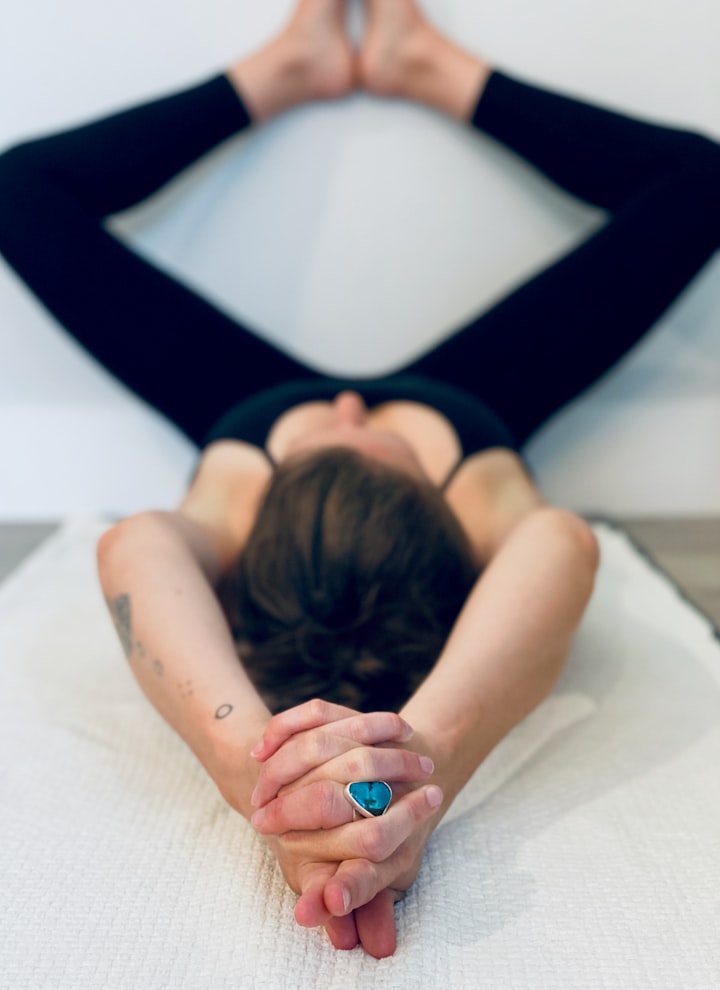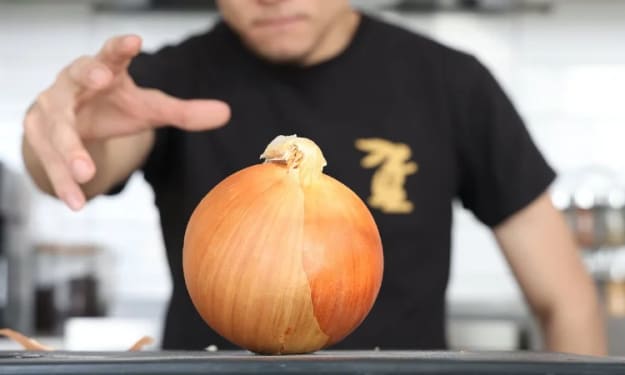Meditation Posture and Positions
How to maintain correct posture by finding the right meditation position.

The “When I first started,” story.
Meditating can seem like an unachievable practice at times. As a beginner, I thought the most important part was getting into that headspace. Turns out, I was wrong. It was my posture. I would spend so much time during my sessions unable to focus, fidgeting because I was uncomfortable or in pain, trying to stay in the perfect position with the perfect posture.
I had to change the way I thought about meditation and my research began. My time of meditation ignorance needed to end.
Learning about the different types of meditation taught me the perfect lotus pose with the perfect mudra commonly seen when reading about meditation, is not the only pose out there. I didn’t even have to sit. Meditation is a practice to be used throughout the day when you need it most. Getting into comfortable clothes and into a lotus pose on a yoga mat is not always practical or possible. It is important to learn a few simple positions and techniques that can be utilized in most daily situations.
Correct your posture. Seriously.
Haven’t you heard it all your life? Sit up straight, don’t slouch, good posture is important. It just made me want to slide down in my chair even more but they were right. Good posture is important. The only similarity between most of the positions and activities that incorporate meditation is good posture.
Good posture can improve circulation, digestion, and lung capacity. It can also reduce back pain and tension in the neck and shoulders.
Ensuring you have correct posture while meditating will prevent any discomfort, pain, or injury. Correct posture may be learned through thorough research or by attending meditation and other yogic classes, courses, or groups.
Poor posture can cause difficulty breathing, headaches, and poor circulation plus many other long-term health effects.
So, please, correct your posture.
You can meditate and what?
Although it is the most common position, you definitely do not have to be sitting to meditate.
Lying Down
A lot of us suffer from back pain or chronic illnesses and sitting may never be comfortable for meditation. Lying down on a yoga mat or blanket can alleviate some of that pain. Use pillows under the head and knees for extra relief and comfort.
Lying down, the back, shoulders, and hips are kept flat on the ground. The feet and knees should be in line with the hips and shoulders. Upper arms should rest on the ground while the hands may be on the ground or stomach, either resting or practicing a mudra.
This position is often used in sleep meditation and yoga.
Sitting
As mentioned, sitting is the most common position for meditation where the sitting bones are kept centered and the spine is in line with the neck and head, following the natural alignment. In other words, keep your butt centered and sit up straight.
These are a few beginner and intermediate yogic and meditation positions. There are variations to these and additional positions for more advanced practitioners that are not listed here.
Sukhasana (Easy or Comfortable Pose)
Center the sitting bones on a meditation bench, cushion, or pillow, keeping the spine, shoulders, neck, and head aligned and relaxed. Begin with the legs straightened. Bend the right knee and rest the right foot under the left thigh. Bend the left knee and rest the left foot under the right calf. The hands are placed on the thighs, either in a resting position or mudra.
One may sit against a wall, placing a rolled towel or cushion at the lower back for support, to assist with keeping the spine in alignment with the neck and head.
Ardha Padmasana (Half Lotus Pose)
Center the sitting bones on a meditation bench, cushion, or pillow, keeping the spine, shoulders, neck, and head aligned and relaxed. Begin with the legs straightened. Bend the right knee and rest the right foot under the inner thigh. Bend the left knee and rest the left foot on top of the right thigh. The hands are placed on the thighs, either in a resting position or mudra.
One may sit against a wall, placing a rolled towel or cushion at the lower back for support, to assist with keeping the spine in alignment with the neck and head.
Padmasana (Lotus Pose)
Center the sitting bones on a meditation bench, cushion, or pillow, keeping the spine, shoulders, neck, and head aligned and relaxed. Begin with the legs straightened. Bend the right knee and rest the right foot on top of the left thigh. Bend the left knee and rest the left foot on top of the right thigh. The hands are placed on the thighs, either in a resting position or mudra.
One may sit against a wall, placing a rolled towel or cushion at the lower back for support, to assist with keeping the spine in alignment with the neck and head.
Chair (Chair Pose)
Place a pillow or cushion on a sturdy chair. Center the sitting bones on the pillow or cushion, keeping the spine, shoulders, neck, and head aligned and relaxed. Place a rolled towel or cushion at the lower back for support. Keep both knees bent and both feet flat on the floor. The hands are placed on the thighs, either in a resting position or mudra.
Kneeling
A kneeling position may assist in keeping correct posture.
The knees will be bent with the shins and tops of the feet flat on the ground. The sitting bones will center on the ankles and feet while the spine is kept aligned with the neck and head. A cushion between the calves and thighs may help with comfort.
This position is often used in yoga and spiritual meditation.
Standing
As with sitting, there are different positions for standing meditation but these mostly involve either holding a position for a period of time or very slow movements during meditation. Standing in an aligned, relaxed position is also acceptable for meditation.
These positions are often used in yoga, Qi Gong, and Zhan Zhuang.
Exercise and Meditation
Mindfulness meditation may be practiced during any exercise, such as walking, jogging, or running. There is a lot to be focusing on in the present moment like breathing, physical bodily sensations, the rhythm of steps, or the environment in which the activity is taking place.
Being mindful of the moment may be practiced at any time and in any situation.
Beyond Little Thoughts
I often use meditation as a way to process my thoughts and emotions to find the answers I am looking for in certain situations. Many times, the answers you seek are already known to you. Our minds are so busy with all our thoughts speeding through it can be difficult to grasp those answers.
Scheduling tasks in my calendar helps keep me on track with topics, writing, and editing. By Fridays, the topic is chosen and a rough draft is completed and by the end of the weekend, I have a mostly finished article. Works out great, most of the time.
By Saturday morning, I had nothing written for the chosen topic I had chosen. I knew I wanted to write a review of an app I had been trying out but my intuition told me that it should not be this article. Not a single topic on my list seemed like a better option. I went on to do a meditation session the app provided, unable to decide on a new topic.
As my sessions often do, my mind answers questions I didn't even know I was asking but definitely needed answers for. Now I have the order of topics for the next few articles, the direction my career path should go, and the path my personal life will continue on. All in a ten minute session I was only doing to review an app.
While I was not able to stick to my schedule, I feel better about the direction this article has taken. I have to remind myself that I made the schedule with a lot of room for emergencies and writers block. I remind myself I am only one person and there is a lot to balance with everything else in life. I am grateful and proud to have been able to come this far with my writing and am so excited to see where it goes.
Whatever the reasons for meditating, it is important to take the time to find the style and position that is most comfortable for you to get the most out of each session.
What are your thoughts?
About the Creator
Michelle Christian
Beyond Little Thoughts became a way for me to vocalize what I have learned and what I continue to learn about multiple topics, giving my own perspective, however flawed it may be.






Comments
There are no comments for this story
Be the first to respond and start the conversation.